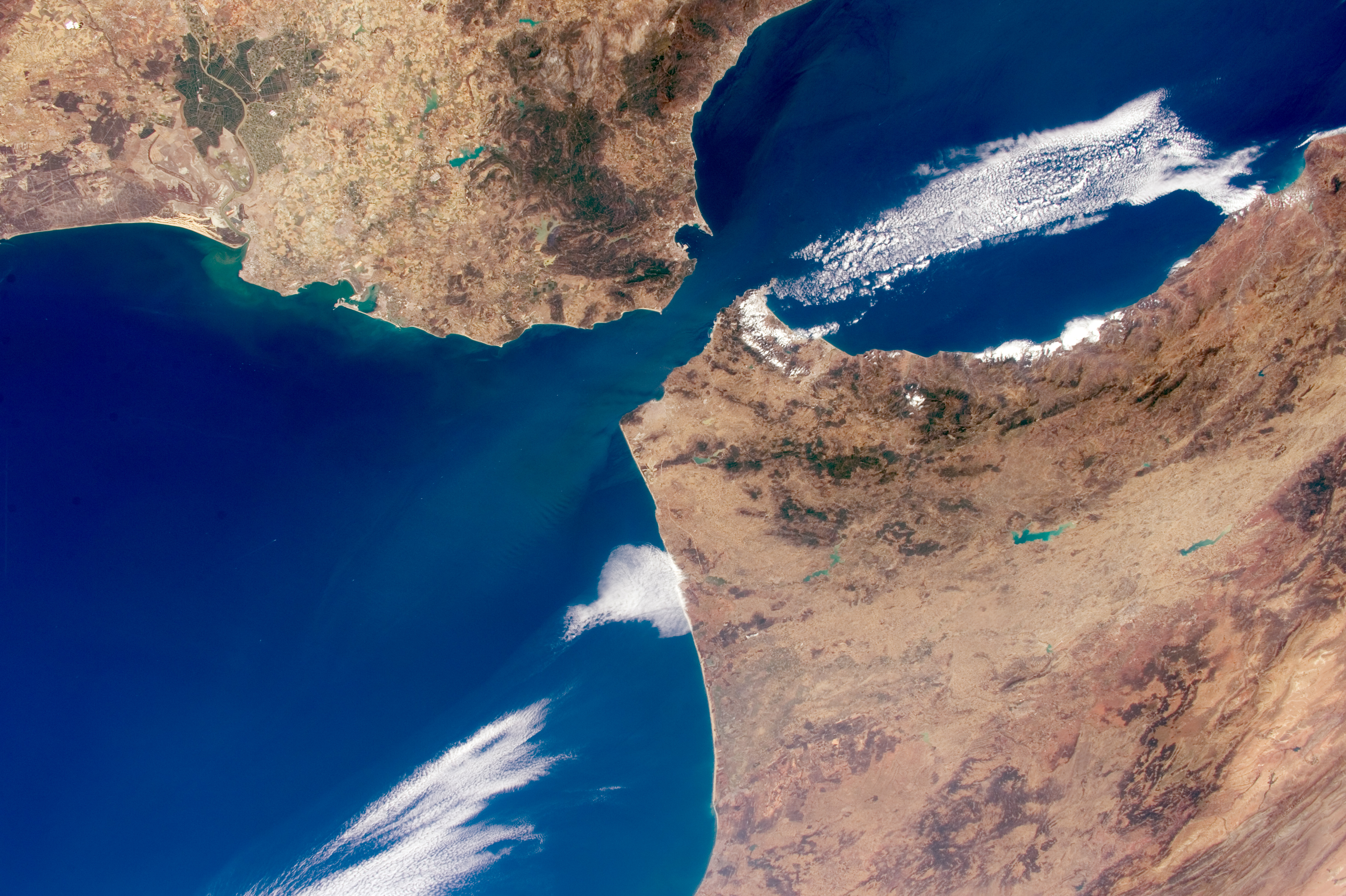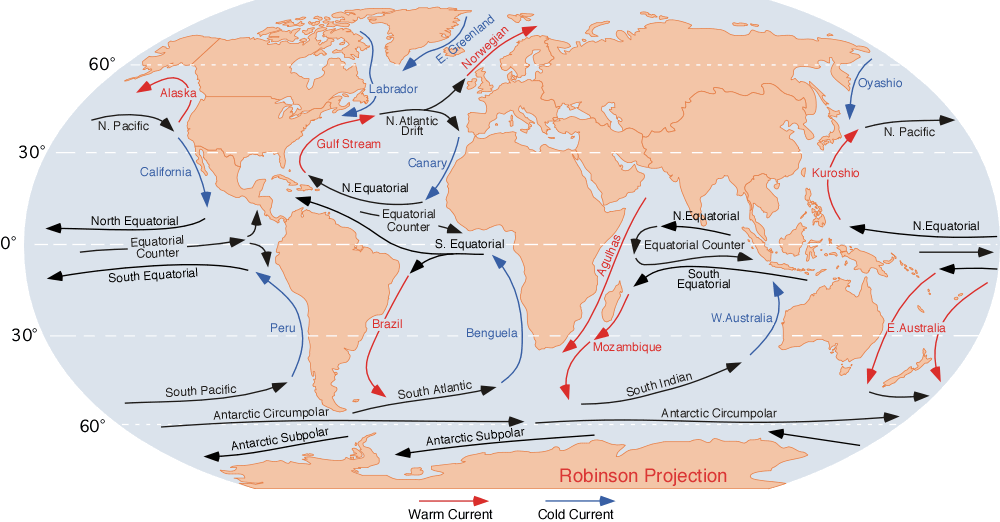|
Tidal Strait
A tidal strait is a strait through which a tidal current flows. Tidal currents are usually unidirectional but sometimes are bidirectional. Tidal straits, though they are narrow seaways, are technically not rivers. They are frequently of tectonic origin. In them, currents develop because of elevation differences between the water basins at both ends. Tidal straits can connect seas and oceans, as well as estuarine zones. Tides sometimes allow sediments to collect in tidal straits. See also * Sediment trap (geology) In geology, a sediment trap is any Depression (geology), topographic depression where sediments substantially accumulate over time. The size of a sediment trap can vary from a small lagoon to a large basin such as the Persian Gulf. References ... * Tidal circularization References External links A facies‐based depositional model for ancient and modern, tectonically–confined tidal straitsDeltas sourcing tidal straits: observations from some field case ... [...More Info...] [...Related Items...] OR: [Wikipedia] [Google] [Baidu] |
Strait En
A strait is a water body connecting two seas or water basins. The surface water is, for the most part, at the same elevation on both sides and flows through the strait in both directions, even though the topography generally constricts the flow somewhat. In some straits there is a dominant directional current. Most commonly, the strait is a narrowing channel that lies between two land masses. Straits are loci for sediment accumulation, with sand-size deposits usually occurring on the two strait exits, forming subaqueous fans or deltas. Some straits are not navigable because, for example, they are too narrow or too shallow, or because of an unnavigable reef or archipelago. Terminology The terms '' channel'', ''pass'', or ''passage'' can be synonymous and used interchangeably with ''strait'', although each is sometimes differentiated with varying senses. In Scotland, '' firth'' or ''Kyle'' are also sometimes used as synonyms for strait. Many straits are economically import ... [...More Info...] [...Related Items...] OR: [Wikipedia] [Google] [Baidu] |
Tidal Current
Tides are the rise and fall of sea levels caused by the combined effects of the gravitational forces exerted by the Moon (and to a much lesser extent, the Sun) and are also caused by the Earth and Moon orbiting one another. Tide tables can be used for any given locale to find the predicted times and amplitude (or " tidal range"). The predictions are influenced by many factors including the alignment of the Sun and Moon, the phase and amplitude of the tide (pattern of tides in the deep ocean), the amphidromic systems of the oceans, and the shape of the coastline and near-shore bathymetry (see '' Timing''). They are however only predictions, the actual time and height of the tide is affected by wind and atmospheric pressure. Many shorelines experience semi-diurnal tides—two nearly equal high and low tides each day. Other locations have a diurnal tide—one high and low tide each day. A "mixed tide"—two uneven magnitude tides a day—is a third regular category. ... [...More Info...] [...Related Items...] OR: [Wikipedia] [Google] [Baidu] |
Seaways
In geography, a sound is a smaller body of water usually connected to a sea or an ocean. A ''sound'' may be an inlet that is deeper than a bight and wider than a fjord; or a narrow sea channel or an ocean channel between two land masses, such as a strait; or also a lagoon between a barrier island and the mainland. Overview A sound is often formed by the seas flooding a river valley. This produces a long inlet where the sloping valley hillsides descend to sea-level and continue beneath the water to form a sloping sea floor. These sounds are more appropriately called rias. The Marlborough Sounds in New Zealand are good examples of this type of formation. Sometimes a sound is produced by a glacier carving out a valley on a coast then receding, or the sea invading a glacier valley. The glacier produces a sound that often has steep, near vertical sides that extend deep underwater. The sea floor is often flat and deeper at the landward end than the seaward end, due to glaci ... [...More Info...] [...Related Items...] OR: [Wikipedia] [Google] [Baidu] |
River
A river is a natural stream of fresh water that flows on land or inside Subterranean river, caves towards another body of water at a lower elevation, such as an ocean, lake, or another river. A river may run dry before reaching the end of its course if it runs out of water, or only flow during certain seasons. Rivers are regulated by the water cycle, the processes by which water moves around the Earth. Water first enters rivers through precipitation, whether from rainfall, the Runoff (hydrology), runoff of water down a slope, the melting of glaciers or snow, or seepage from aquifers beneath the surface of the Earth. Rivers flow in channeled watercourses and merge in confluences to form drainage basins, or catchments, areas where surface water eventually flows to a common outlet. Rivers have a great effect on the landscape around them. They may regularly overflow their Bank (geography), banks and flood the surrounding area, spreading nutrients to the surrounding area. Sedime ... [...More Info...] [...Related Items...] OR: [Wikipedia] [Google] [Baidu] |
Tectonic
Tectonics ( via Latin ) are the processes that result in the structure and properties of the Earth's crust and its evolution through time. The field of ''planetary tectonics'' extends the concept to other planets and moons. These processes include those of mountain-building, the growth and behavior of the strong, old cores of continents known as cratons, and the ways in which the relatively rigid plates that constitute the Earth's outer shell interact with each other. Principles of tectonics also provide a framework for understanding the earthquake and volcanic belts that directly affect much of the global population. Tectonic studies are important as guides for economic geologists searching for fossil fuels and ore deposits of metallic and nonmetallic resources. An understanding of tectonic principles can help geomorphologists to explain erosion patterns and other Earth-surface features. Main types of tectonic regime Extensional tectonics Extensional tectonic ... [...More Info...] [...Related Items...] OR: [Wikipedia] [Google] [Baidu] |
Ocean Current
An ocean current is a continuous, directed movement of seawater generated by a number of forces acting upon the water, including wind, the Coriolis effect, breaking waves, cabbeling, and temperature and salinity differences. Depth contours, shoreline configurations, and interactions with other currents influence a current's direction and strength. Ocean currents move both horizontally, on scales that can span entire oceans, as well as vertically, with vertical currents (upwelling and downwelling) playing an important role in the movement of nutrients and gases, such as carbon dioxide, between the surface and the deep ocean. Ocean currents flow for great distances and together they create the global conveyor belt, which plays a dominant role in determining the climate of many of Earth's regions. More specifically, ocean currents influence the temperature of the regions through which they travel. For example, warm currents traveling along more temperate coasts increase the temper ... [...More Info...] [...Related Items...] OR: [Wikipedia] [Google] [Baidu] |
Tides
Tides are the rise and fall of sea levels caused by the combined effects of the gravitational forces exerted by the Moon (and to a much lesser extent, the Sun) and are also caused by the Earth and Moon orbiting one another. Tide tables can be used for any given locale to find the predicted times and amplitude (or " tidal range"). The predictions are influenced by many factors including the alignment of the Sun and Moon, the phase and amplitude of the tide (pattern of tides in the deep ocean), the amphidromic systems of the oceans, and the shape of the coastline and near-shore bathymetry (see '' Timing''). They are however only predictions, the actual time and height of the tide is affected by wind and atmospheric pressure. Many shorelines experience semi-diurnal tides—two nearly equal high and low tides each day. Other locations have a diurnal tide—one high and low tide each day. A "mixed tide"—two uneven magnitude tides a day—is a third regular category. ... [...More Info...] [...Related Items...] OR: [Wikipedia] [Google] [Baidu] |
Sediments
Sediment is a solid material that is transported to a new location where it is deposited. It occurs naturally and, through the processes of weathering and erosion, is broken down and subsequently sediment transport, transported by the action of wind, water, or ice or by the force of gravity acting on the particles. For example, sand and silt can be carried in suspension (chemistry), suspension in river water and on reaching the sea bed deposited by sedimentation; if buried, they may eventually become sandstone and siltstone (sedimentary rocks) through lithification. Sediments are most often transported by water (fluvial, fluvial processes), but also wind (aeolian processes) and glaciers. Beach sands and stream channel, river channel deposits are examples of fluvial transport and deposition (geology), deposition, though sediment also often settles out of slow-moving or standing water in lakes and oceans. Desert sand dunes and loess are examples of aeolian transport and deposition. ... [...More Info...] [...Related Items...] OR: [Wikipedia] [Google] [Baidu] |
Arthur Kill Pralls Island
Arthur is a masculine given name of uncertain etymology. Its popularity derives from it being the name of the legendary hero King Arthur. A common spelling variant used in many Slavic, Romance, and Germanic languages is Artur. In Spanish and Italian it is Arturo. Etymology The earliest attestation of the name Arthur is in the early 9th century Welsh-Latin text ''Historia Brittonum'', where it refers to a circa 5th century Romano-British general who fought against the invading Anglo-Saxons, Saxons, and who later gave rise to the famous King Arthur of medieval legend and literature. A possible earlier mention of the same man is to be found in the epic Welsh poem ''Y Gododdin'' by Aneirin, which some scholars assign to the late 6th century, though this is still a matter of debate and the poem only survives in a late 13th century manuscript entitled the Book of Aneirin. A 9th-century Breton people, Breton landowner named Arthur witnessed several charters collected in the ''Redon_Abbey ... [...More Info...] [...Related Items...] OR: [Wikipedia] [Google] [Baidu] |
Sediment Trap (geology)
In geology, a sediment trap is any Depression (geology), topographic depression where sediments substantially accumulate over time. The size of a sediment trap can vary from a small lagoon to a large basin such as the Persian Gulf. References Sediments Sedimentary structures Fluvial landforms {{Ocean-stub ... [...More Info...] [...Related Items...] OR: [Wikipedia] [Google] [Baidu] |
Tidal Circularization
Tidal circularization is an effect of the tidal forces between a body in orbit around a central celestial object, whereby the eccentricity of the orbit is reduced over time so that it becomes less and less elliptical. Typical situation In Figure 1, consider two stars, denoted Body 1 and Body 2. Initially think of Body 2 as a point mass. The gravity from Body 2 applied to Body 1 produces tidal bulges (see Tidal Force). Let's assume the orbital period is slower than the rotation of Body 1 (ω Ω, the lag angle will be in the other direction. For a star we can think of inelasticity as viscosity. The main cause of inelasticity in a star seems to be convection forces inside the star. When the lag angle is non zero as in figure 1, the forces F1 and F2 combine to produce clockwise torque on body 1, because F1 is stronger. At the same time they torque the orbital motion counter clockwise: if you ignore the portion of F1 and F2 that lie along the line connecting the two bodies t ... [...More Info...] [...Related Items...] OR: [Wikipedia] [Google] [Baidu] |







